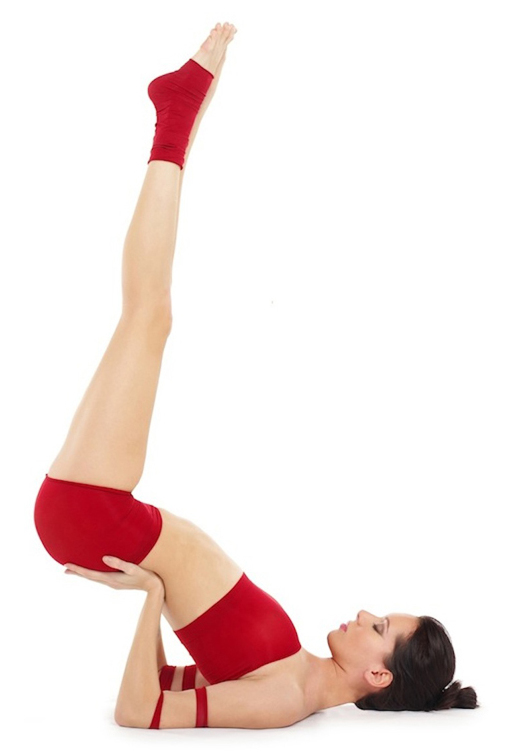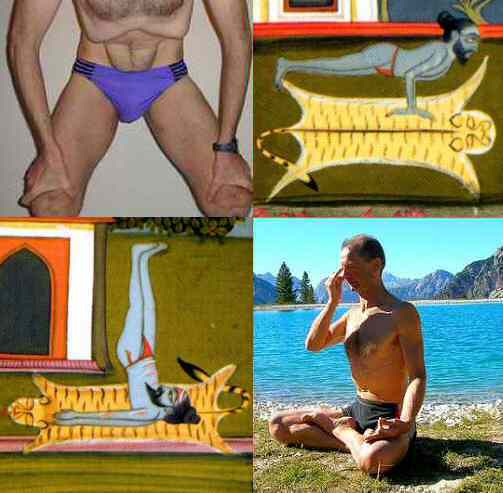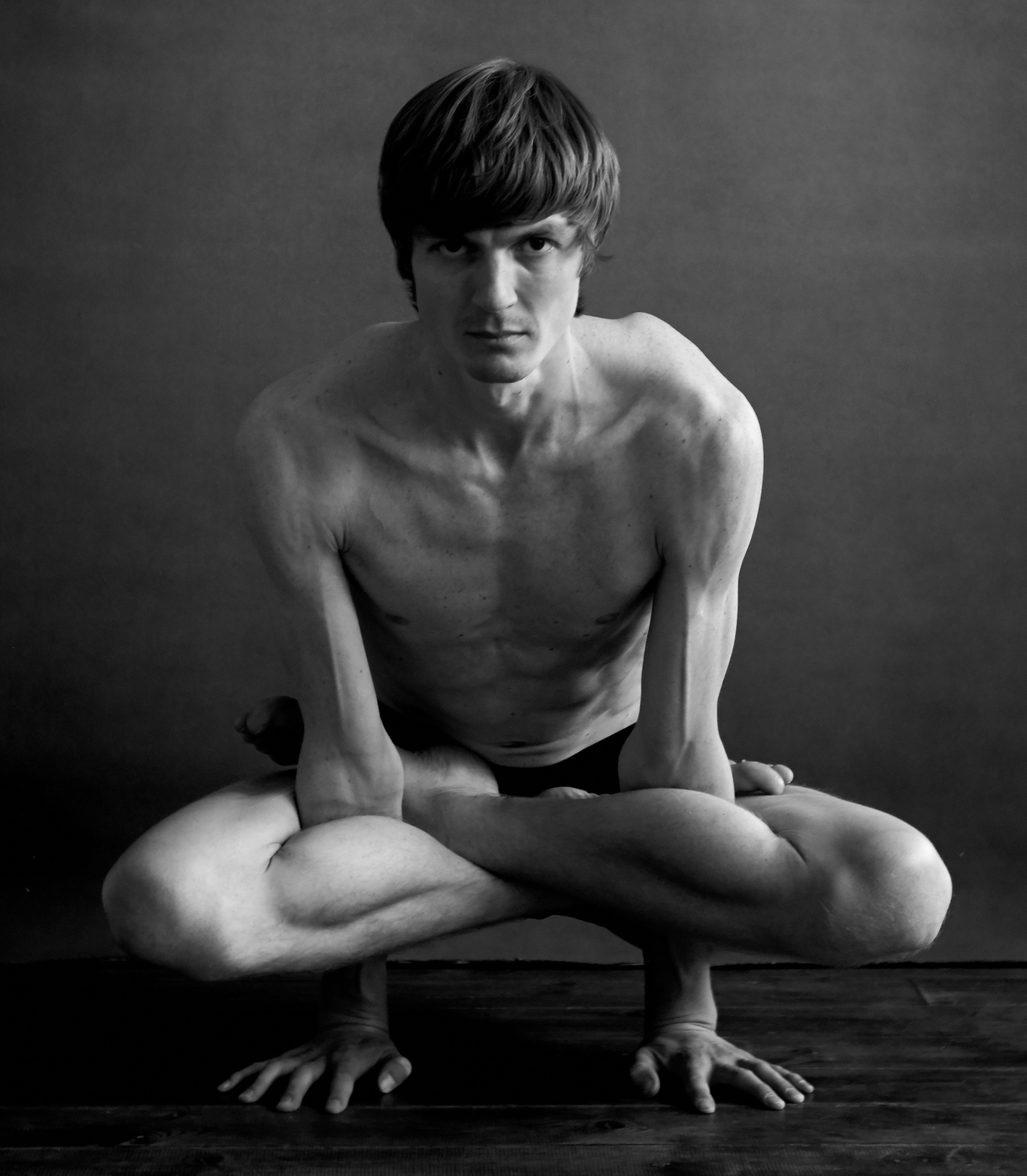|
Yogasopana
The ''Yogasopana Purvacatuska'' (Marathi: योगसोपान पूर्वचतुष्क (in Devanagari script)) or ''Stairway to Yoga'' is a 1905 book in Marathi on hatha yoga by Yogi Narayana Ghamande. It describes and illustrates 37 asanas including Matsyendrasana and Sarvangasana, along with mudras such as Viparita Karani. It was the first and probably the only textbook on yoga to be illustrated with halftone plates. It was influential as the first illustrated yoga textbook to be printed. The book was transitional in several ways: from traditional secrecy to public access to hatha yoga's practices; from symbolic to naturalistic representation of the yoga body, its halftone engravings forming a halfway house between painting and photography; and from spiritual description to art. A transitional book The yoga scholar Mark Singleton observes that the publication of ''Yogasopana'' was in several ways a "key transitional moment" from medieval hatha yoga to modern yog ... [...More Info...] [...Related Items...] OR: [Wikipedia] [Google] [Baidu] |
Shirshasana
Shirshasana (Sanskrit: शीर्षासन, IAST: śīrṣāsana) Salamba Shirshasana, or Yoga Headstand is an inverted asana in modern yoga as exercise; it was described as both an asana and a mudra in classical hatha yoga, under different names. It has been called the king of all asanas. Its many variations can be combined into Mandalasana, in which the legs are progressively swept from one variation to the next in a full circle around the body. Etymology and origins The name Salamba Shirshasana comes from the Sanskrit words सालम्ब ''Sālamba'' meaning "supported", शीर्ष, ''Śīrṣa'' meaning "head", and आसन, ''Āsana'' meaning "posture" or "seat". The name ''Śīrṣāsana'' is relatively recent; the pose itself is much older, but had other names and purposes. Like other inversions, it was practised as Viparita Karani, described as a mudra in the 15th century ''Hatha Yoga Pradipika'' and other classical texts on haṭha yoga. Viparita Karan ... [...More Info...] [...Related Items...] OR: [Wikipedia] [Google] [Baidu] |
Matsyendrasana
Matsyendrasana ( sa, मत्स्येन्द्रासन; IAST: ''Matsyendrāsana''), Matsyendra's Pose or Lord of the Fishes Pose, is a seated twisting asana in hatha yoga and modern yoga as exercise. The full form is the difficult Paripurna Matsyendrasana. A common and easier variant is Ardha Matsyendrasana. The asana has many variations, and in its half form is one of the twelve basic asanas in many systems of hatha yoga. Etymology and origins The name comes from the Sanskrit words परिपूर्ण ''Paripurna'', perfected; मत्स्येन्द् '' Matsyendra'', one of the founders of hatha yoga, whose name in turn means "lord of the fishes"; and आसन '' asana'', posture or seat; अर्ध ''ardha'' means half. The asana is medieval, described in the 15th century ''Haṭha Yoga Pradīpikā'' 1.26-7, which states that it destroys many diseases, and the 17th century '' Gheraṇḍa Saṃhitā'' 2.22-23. Yogi Ghamande chose the asana fo ... [...More Info...] [...Related Items...] OR: [Wikipedia] [Google] [Baidu] |
Salabhasana
Salabhasana or Purna Salabhasana ( sa, शलभासन; IAST: ''Śalabhāsana''), Locust pose, or Grasshopper pose is a prone back-bending asana in modern yoga as exercise. Etymology and origins The asana's name comes from the Sanskrit शलभा "shalabh" which means "grasshopper" or "locust". The pose is not found in the medieval hatha yoga texts. It is included in Yoga Ghamande's 1905 ''Yogasopana Purvacatuska'', the first yoga manual with printed illustrations, uniquely as halftone plates. It is described independently in Swami Vishnudevananda's 1960 ''Complete Illustrated Book of Yoga'' in the Sivananda Yoga tradition, and by ''B. K. S. Iyengar'' in his 1966 ''Light on Yoga'', implying that it may have older origins. A similar pose was found in Western gymnastics in '' The Bagot Stack Stretch-and-Swing System'', 1931, though Mary Bagot Stack had visited India. File:Salabhasana in Yogasopana 1905.jpg, Salabhasana in ''Yogasopana Purvacatuska The ''Yogasopana Purva ... [...More Info...] [...Related Items...] OR: [Wikipedia] [Google] [Baidu] |
Dhanurasana
Dhanurasana ( sa, धनुरासन, lit=Bow pose, translit=Dhanurāsana) is a back bending '' asana'' in ''hatha yoga'' and modern yoga as exercise. Etymology and origins The name comes from the Sanskrit words धनुर (dhanura) meaning " bow", and आसन (āsana) meaning "posture" or "seat". A similar pose named Nyubjasana, "the face-down asana", is described and illustrated in the 19th century ''Sritattvanidhi''. The pose is illustrated in half-tone in the 1905 ''Yogasopana Purvacatuska'' and named Dhanurāsana, quoting the ''Gheranda Samhitas description. It is unclear whether the asana is medieval, as although the name is used, the intended pose might be the sitting Akarna Dhanurasana rather than this backbend. The account of Dhanurasana in the 15th century ''Hatha Yoga Pradipika'' is ambiguous about whether the pose is reclining or sitting, stating The 17th century ''Gheranda Samhita'' is similarly ambiguous, stating Dhanurasana is used in the classical ... [...More Info...] [...Related Items...] OR: [Wikipedia] [Google] [Baidu] |
Viparita Karani
Viparita Karani ( sa, विपरीतकरणी; ) or legs up the wall pose is both an asana and a mudra in hatha yoga. In modern yoga as exercise, it is commonly a fully supported pose using a wall and sometimes a pile of blankets, where it is considered a restful practice. As a mudra it was practised using any preferred inversion, such as a headstand or shoulderstand. The purpose of the mudra was to reverse the downward flow of vital fluid being lost from the head, using gravity. Etymology and origins The name comes from the Sanskrit words विपरीत ''viparīta'', "inverted" or "reversed", and करणी ''karaṇī'', "a particular type of practice". The practice is described in the 13th century ''Vivekamārtaṇḍa'' (verses 103-131) as a means of yogic withdrawal, pratyahara. The pose was practised from the 17th century onwards in hatha yoga under names such as Narakasana, Kapalasana and Viparitakaranasana; its purpose as a mudra was to reverse the downf ... [...More Info...] [...Related Items...] OR: [Wikipedia] [Google] [Baidu] |
Mahamudra (Hatha Yoga)
''Mahamudra'' is a hatha yoga gesture ( mudra) whose purpose is to improve control over the sexual potential. The sexual potential, associated with apana, is essential in the process of awakening of the dormant spiritual energy (Kundalini) and attaining of spiritual powers ( siddhi). Execution Pressure is exerted with the heel on the perineum. This zone is considered to be closely involved in the control of the vital and sexual potential. At the same time, the throat is compressed (Jalandhara Bandha) activating the throat chakra ( Vishuddha Chakra) - center of the akashic energies of void. Effect By activating the energies of akasha and simultaneously stimulating the energies of Muladhara Chakra, Kundalini awakens and raises through the central channel, Sushumna Nadi. The void is considered to be a substrate, an intermediary state in any transformation. Here it projects the lower energies up the spine, transforming them in spiritual energies instead. Thus Mahamudra is a gestu ... [...More Info...] [...Related Items...] OR: [Wikipedia] [Google] [Baidu] |
Hatha Yoga
Haṭha yoga is a branch of yoga which uses physical techniques to try to preserve and channel the vital force or energy. The Sanskrit word हठ ''haṭha'' literally means "force", alluding to a system of physical techniques. Some haṭha yoga style techniques can be traced back at least to the 1st-century CE, in texts such as the Hindu Sanskrit epics and Buddhism's Pali canon. The oldest dated text so far found to describe haṭha yoga, the 11th-century '' Amṛtasiddhi'', comes from a tantric Buddhist milieu. The oldest texts to use the terminology of ''hatha'' are also Vajrayana Buddhist. Hindu hatha yoga texts appear from the 11th century onwards. Some of the early haṭha yoga texts (11th-13th c.) describe methods to raise and conserve bindu (vital force, that is, semen, and in women ''rajas –'' menstrual fluid). This was seen as the physical essence of life that was constantly dripping down from the head and being lost. Two early Haṭha yoga techniques sough ... [...More Info...] [...Related Items...] OR: [Wikipedia] [Google] [Baidu] |
Subtle Body
A subtle body is a "quasi material" aspect of the human body, being neither solely physical nor solely spiritual, according to various esoteric, occult, and mystical teachings. This contrasts with the mind–body dualism that has dominated Western thought. The subtle body is important in the Taoism of China and Dharmic religions such as Hinduism, Buddhism, and Jainism, mainly in the branches which focus on tantra and yoga, where it is known as the ''Sūkṣma-śarīra'' ( sa, सूक्ष्म शरीर). However, while mostly associated with Asian cultures, non-dualistic approaches to the mind and body are found in many parts of the world. Subtle body concepts and practices can be identified as early as 2nd century BCE in Taoist texts found in the Mawangdui tombs. Although "evidently present" in Indian thought as early as the 4th to 1st century BCE when the Taittiriya Upanishad describes the Panchakoshas, a series of five interpenetrating sheaths of the body. A full ... [...More Info...] [...Related Items...] OR: [Wikipedia] [Google] [Baidu] |
Mayurasana
Mayūrāsana ( sa, मयूरासन) or Peacock pose is a hand-balancing asana in hatha yoga and modern yoga as exercise with the body held horizontal over the hands. It is one of the oldest non-seated asanas. Etymology and origins The name comes from the Sanskrit words ''mayūra'' (मयूर) meaning "peacock" and ''āsana'' (आसन) meaning "posture". Mayurasana is one of the oldest non-seated asanas used in hatha yoga; it is first described in the 10th century '' Vimānārcanākalpa''. The ''Vāsiṣṭha Saṁhitā'' 1.76-7 states that it destroys all sins. Description In this asana the body is raised like a horizontal stick holding the floor with both palms while the body is supported by the elbows. Variations Hamsasana (Swan Pose) is identical to Mayurasana except that the hands are placed with the fingers pointing forwards. Padma Mayurasana (Lotus in Peacock Pose) has the legs crossed as in Lotus Position. See also * List of asanas * Planche (exercise ... [...More Info...] [...Related Items...] OR: [Wikipedia] [Google] [Baidu] |
Kukkutasana
Kukkutasana ( sa, कुक्कुटासन; IAST: ''Kukkuṭāsana''), Cockerel Pose, or Rooster Posture is an arm-balancing asana in hatha yoga and modern yoga as exercise, derived from the seated Padmasana, lotus position. It is one of the oldest non-seated asanas. Similar hand-balancing poses known from the 20th century include Pendant Pose or Lolasana, and Scale Pose or Tulasana. Etymology and origins The name comes from the Sanskrit words ''kukkuṭā'' meaning " cockerel" and ''asana'' (आसन) meaning "posture" or "seat". Kukkutasana is described in medieval hatha yoga texts including the 7th century ''Ahirbudhnya Saṃhitā'', revised from American Academy of Religions conference, San Francisco, 19 November 2011. the 13th century '' Vasishtha Samhita'', the 15th century '' Haṭha Yoga Pradīpikā'' 1.23, the 17th century ''Gheraṇḍa Saṃhitā'' 2.31, and the '' Bahr al-hayat'' c. 1602. Tulasana and Lolasana are not described in the medieval hatha yoga t ... [...More Info...] [...Related Items...] OR: [Wikipedia] [Google] [Baidu] |
Vriksasana
Tree pose or Vrikshasana ( sa, वृक्षासन, translit=vṛkṣāsana) is a balancing asana. It is one of the very few standing poses in medieval hatha yoga, and remains popular in modern yoga as exercise. The pose has been called iconic of modern yoga; it is often featured in yoga magazines, and practised in public displays such as for the International Day of Yoga. Etymology and origins The name comes from the Sanskrit words () meaning 'tree', and () meaning 'posture'. A 7th-century stone carving in Mahabalipuram appears to contain a figure standing on one leg, perhaps indicating that a pose similar to vrikshasana was in use at that time. It is said that sadhus disciplined themselves by choosing to meditate in the pose. The pose is described in the 17th century ''Gheraṇḍa Saṃhitā'' 2.36. More recently it has been called iconic of modern yoga; it is often featured in yoga magazines, and practised in public displays such as for the International Day of Yo ... [...More Info...] [...Related Items...] OR: [Wikipedia] [Google] [Baidu] |
Sophist
A sophist ( el, σοφιστής, sophistes) was a teacher in ancient Greece in the fifth and fourth centuries BC. Sophists specialized in one or more subject areas, such as philosophy, rhetoric, music, athletics, and mathematics. They taught ''arete'' – "virtue" or "excellence" – predominantly to young statesmen and nobility. In the present day, however, a sophist refers to someone who deliberately argues using fallacious arguments or reasoning, in order to mislead; see the section below. Etymology The Greek word el, σοφός, sophos, a wise man, label=none is related to the noun el, σοφία, sophia, wisdom, label=none. Since the times of Homer it commonly referred to an expert in his profession or craft. Charioteers, sculptors, or military experts could be referred to as in their occupations. The word has gradually come to connote general wisdom and especially wisdom in human affairs such as politics, ethics, and household management. This was the meaning a ... [...More Info...] [...Related Items...] OR: [Wikipedia] [Google] [Baidu] |
.jpg)
.jpg)

.jpg)







